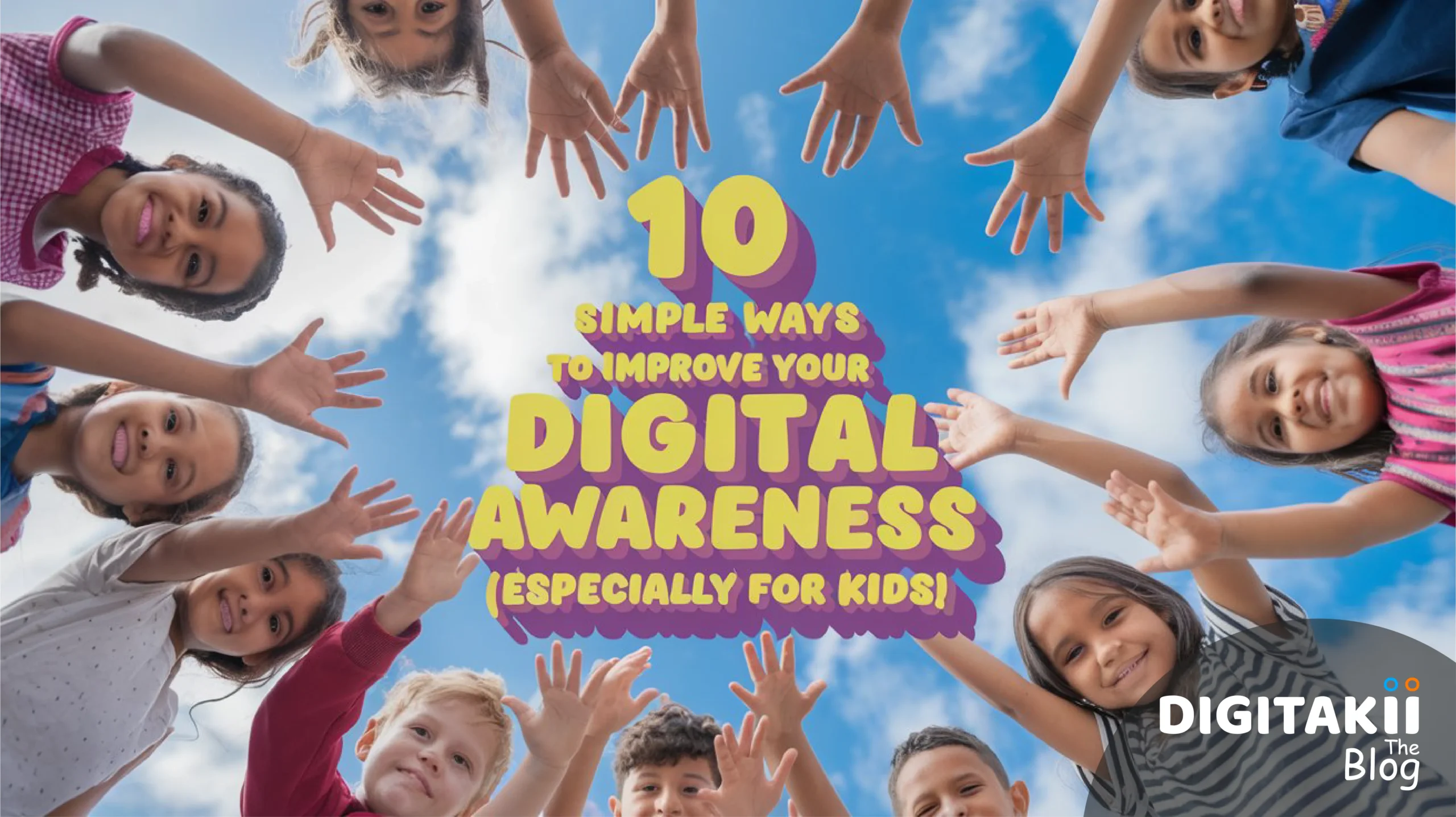As kids increasingly spend more time online, it’s crucial to teach them about digital awareness. From social media and online games to educational apps, kids are navigating a digital landscape that’s both exciting and risky. But how can we, as parents, educators, and guardians, ensure they’re prepared to make smart, safe decisions? This guide on how to improve digital awareness for kids covers simple, actionable steps to help them understand the online world responsibly.
By learning these 10 methods, you can empower your child to become a savvy digital citizen who knows how to stay safe, respect others, and think critically about what they see and share online.
10 Simple Ways to Improve Digital Awareness for Kids
1. Teach the Basics of Online Privacy
Helping kids understand privacy is fundamental to digital awareness. Explain why personal details like their full name, address, school, and birthdate should never be shared publicly online. Show them how to adjust privacy settings on apps or games and emphasize the importance of creating strong passwords.
- Tip: Use relatable examples, like how they wouldn’t give a stranger on the street their home address, to explain why they should guard personal information online.
2. Encourage Critical Thinking About Content
Kids are exposed to a lot of information online, and not all of it is true. Encourage your child to question what they read, see, or hear on social media, games, and videos. Help them understand that some content might be exaggerated or false and that it’s always good to double-check facts.
- Exercise: Have your child practice distinguishing between factual and misleading content by evaluating different types of online sources together.
3. Explain the Concept of a Digital Footprint
Everything kids post online becomes part of their “digital footprint.” Show them how online actions, such as comments, photos, and shared posts, contribute to their digital presence. Teach them to pause and think before sharing anything that could be permanent.
- Activity: Review their recent social media posts together to discuss how each contributes to their online image.
4. Promote Cyberbullying Awareness and Prevention
Cyberbullying is a real threat, and kids need to know how to recognize and respond to it. Talk about what cyberbullying looks like and encourage them to come to you or another trusted adult if they ever feel uncomfortable or threatened online.
- Advice: Make sure they know they won’t get in trouble for reporting cyberbullying—reassure them that it’s about keeping them safe.
5. Teach Safe Communication with Strangers Online
Help your child understand the risks of interacting with strangers online. Many games and apps have social features that may allow them to chat with unknown people. Set ground rules for online communication and make it clear that they should only communicate with people they know in real life.
- Rule: Emphasize that not everyone online is who they claim to be. Teach them never to share personal information with strangers.
6. Encourage Balanced Screen Time
Digital awareness also involves knowing when to step away from screens. Encourage your child to balance online time with offline activities, like reading, playing outside, or spending time with family and friends.
- Tool: Use screen time tracking apps or parental control settings to monitor and limit usage if needed.
7. Practice Online Etiquette and Respectful Behavior
Teach kids that good manners apply online, just as they do offline. Remind them to be respectful, avoid using hurtful language, and treat others as they would like to be treated. Explain the consequences of posting negative or hurtful comments and how it can affect others.
- Suggestion: Role-play various online scenarios to help them practice polite and respectful responses.
8. Introduce Digital Literacy Skills
Digital literacy goes hand in hand with digital awareness. Show your child how to use search engines effectively, evaluate reliable sources, and understand advertising tactics. This knowledge helps them navigate online resources intelligently.
- Activity: Go through a fact-checking exercise together, comparing two different websites on the same topic to evaluate credibility.
9. Help Them Understand Online Advertisements and Scams
Kids can easily be tricked by flashy ads or online scams. Explain how some ads may try to get them to buy unnecessary things or click on links that could lead to scams or viruses. Teach them to identify sponsored content and pop-up ads that look suspicious.
- Tip: Point out real examples of ads versus authentic content on their favorite apps or websites to help them understand the difference.
10. Emphasize the Importance of Asking for Help
Finally, make sure your child knows they can come to you or another trusted adult with any questions or concerns about their online experience. By creating an open environment, you’ll encourage them to be transparent about what they’re seeing or doing online.
- Reassurance: Remind them that asking questions is a good thing, and that no question about online safety is too small or silly.
Conclusion
Improving digital awareness for kids doesn’t have to be complex. With these 10 simple strategies, you can help your child become a safer, smarter, and more responsible digital citizen. Remember, building digital awareness is a gradual process that benefits from regular conversations and open communication. By staying engaged and informed, you can help your child enjoy the best parts of the digital world while avoiding common pitfalls.
Encourage them to ask questions, stay curious, and always think before they click. Let’s empower kids to navigate the online world with confidence and care!



